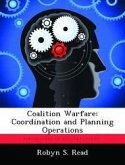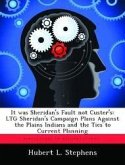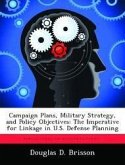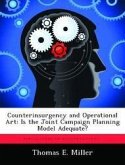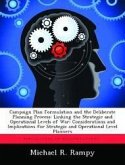Information warfare is a nebulous concept, but widely cited as a keystone in any future campaign. Even though information warfare has been used for centuries, current doctrine, policies, and guidance provide little help for the warrior to understand first, what information warfare is, and secondly, how to do it.Information Warfare: Planning The Campaign provides a logical approach for the information warrior to employ in planning for this aspect of warfare. This paper addresses the:. Current state of information warfare policy and doctrine, . Modeling of a system to identify its critical nodes and links, . Modeling of a Joint Forces Air Component Commander (JFACC) to serve as an example, . Examples of current and potential offensive and defensive information warfare tools used in information encounters, and finally, . A step-by-step approach to information warfare campaign planning. Analysis of information and its flow is a daunting undertaking in all but the most simple of organizations. To remedy this, one can view the organization as a system and employ a model which will help illustrate information flows. It is reasonable to employ the same model for this purpose as is used by system engineers who create information systems. This paper describes such a model, the Operational Architectures Model, which employs the Integrated Computer Aided Manufacturing (ICAM) DEFinition Methods or IDEF for short, to identify the flow of information in a system. Internal to the Operational Architectures Model are five modeling perspectives: functional, physical, static, informational, and dynamic. The functional perspective identifies what functions a system must accomplish to achieve its overall purpose. The physical perspective establishes what assets the system uses to accomplish its purpose. Combining these assets with the functions they support produces the static perspective, a view of the system at rest. The informational perspective assesses the structure of the informa
Hinweis: Dieser Artikel kann nur an eine deutsche Lieferadresse ausgeliefert werden.
Hinweis: Dieser Artikel kann nur an eine deutsche Lieferadresse ausgeliefert werden.




